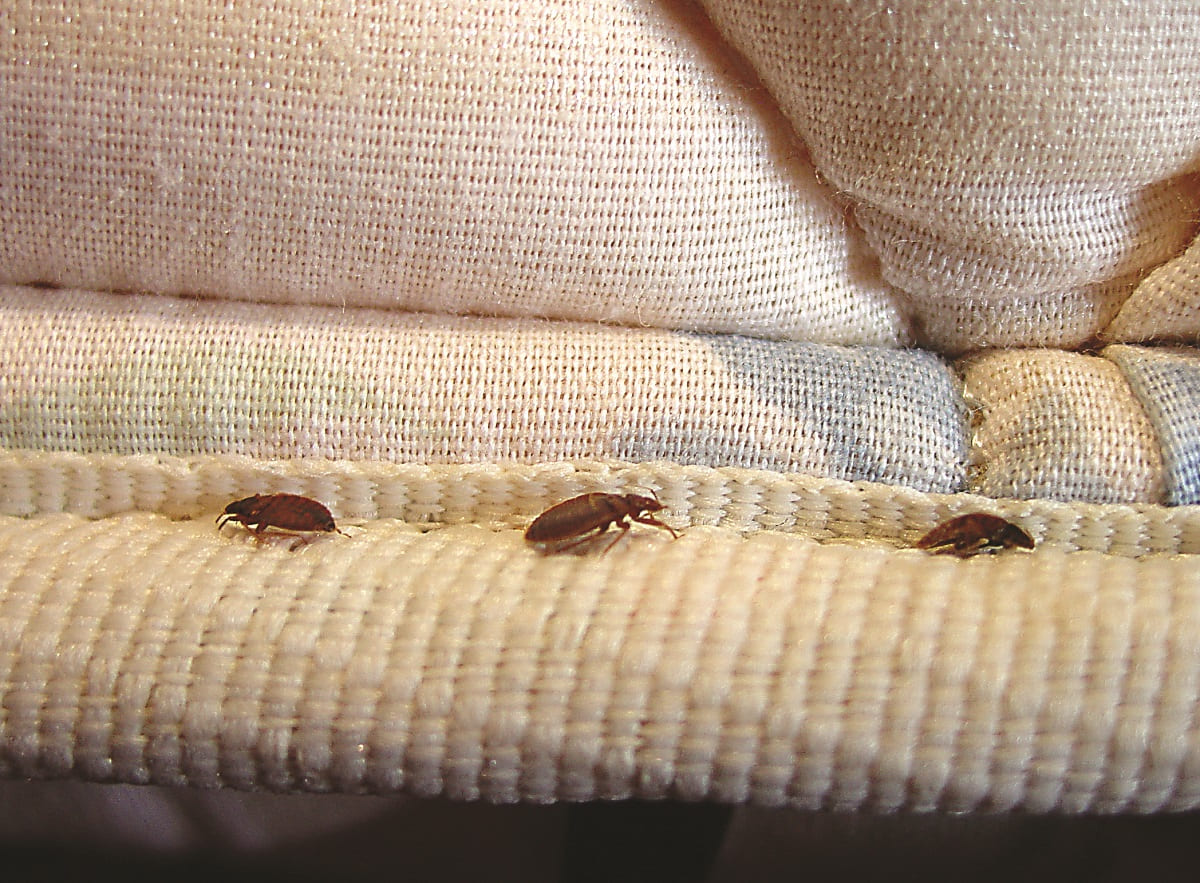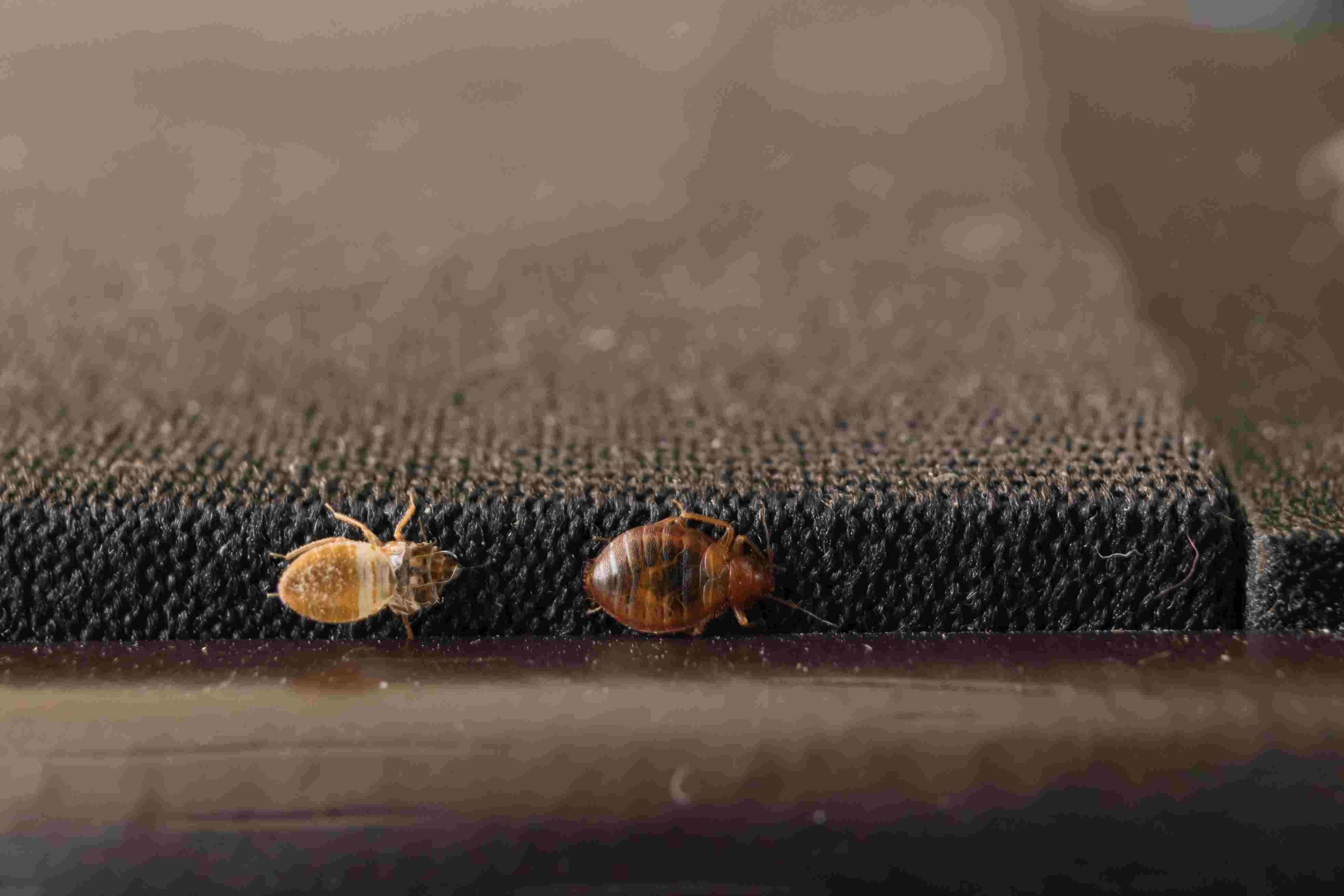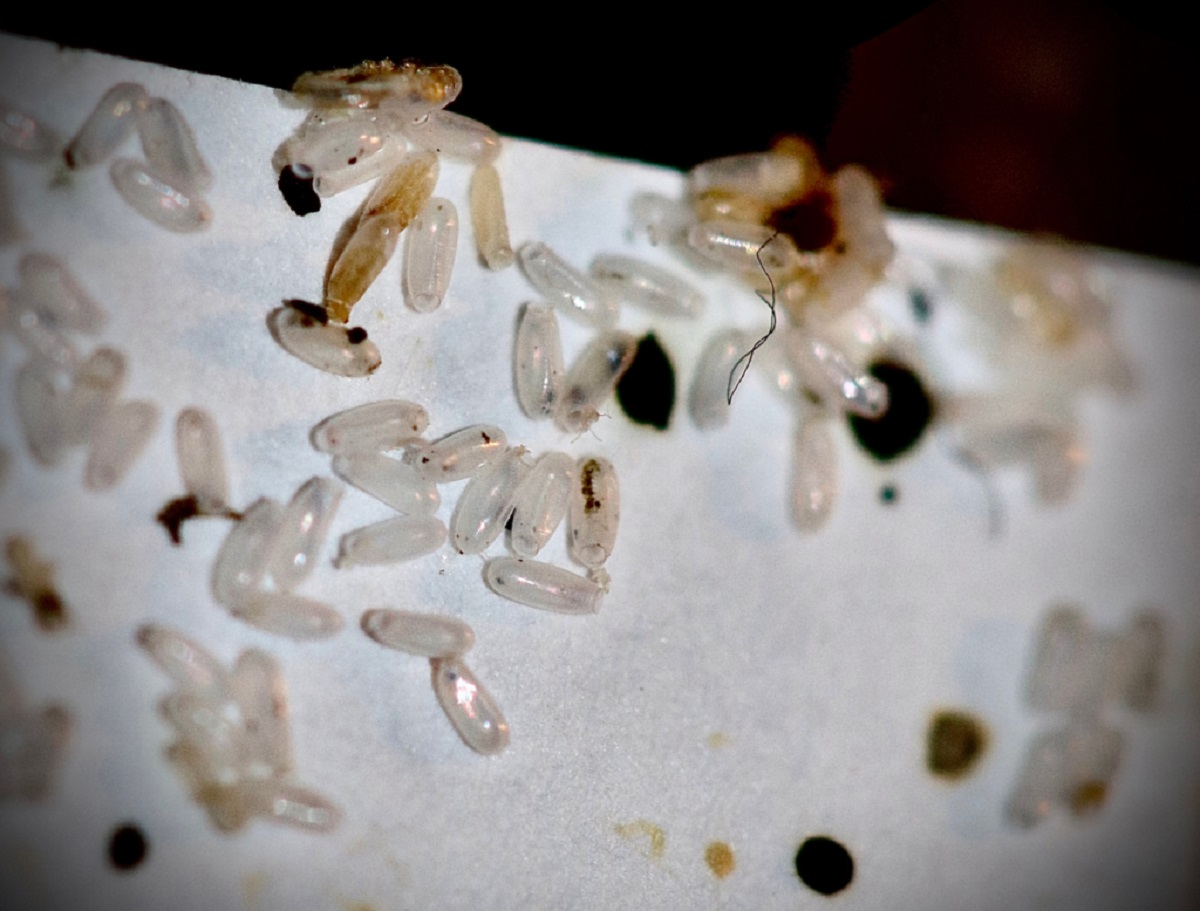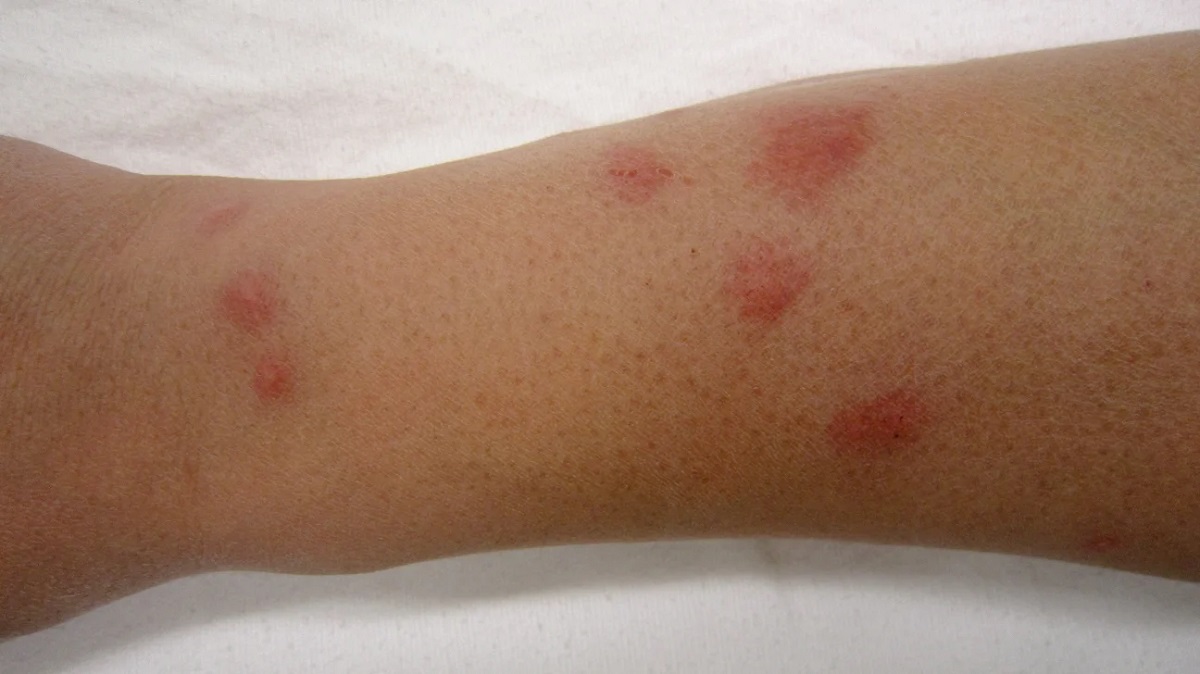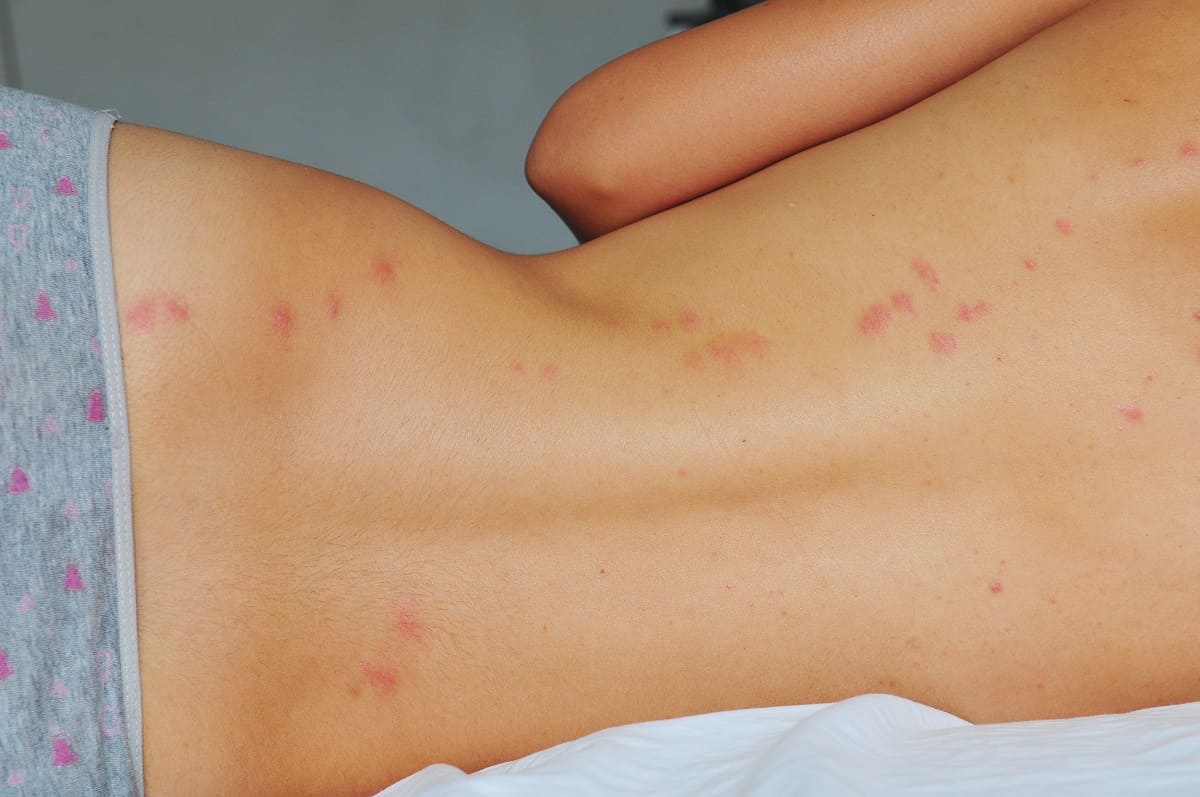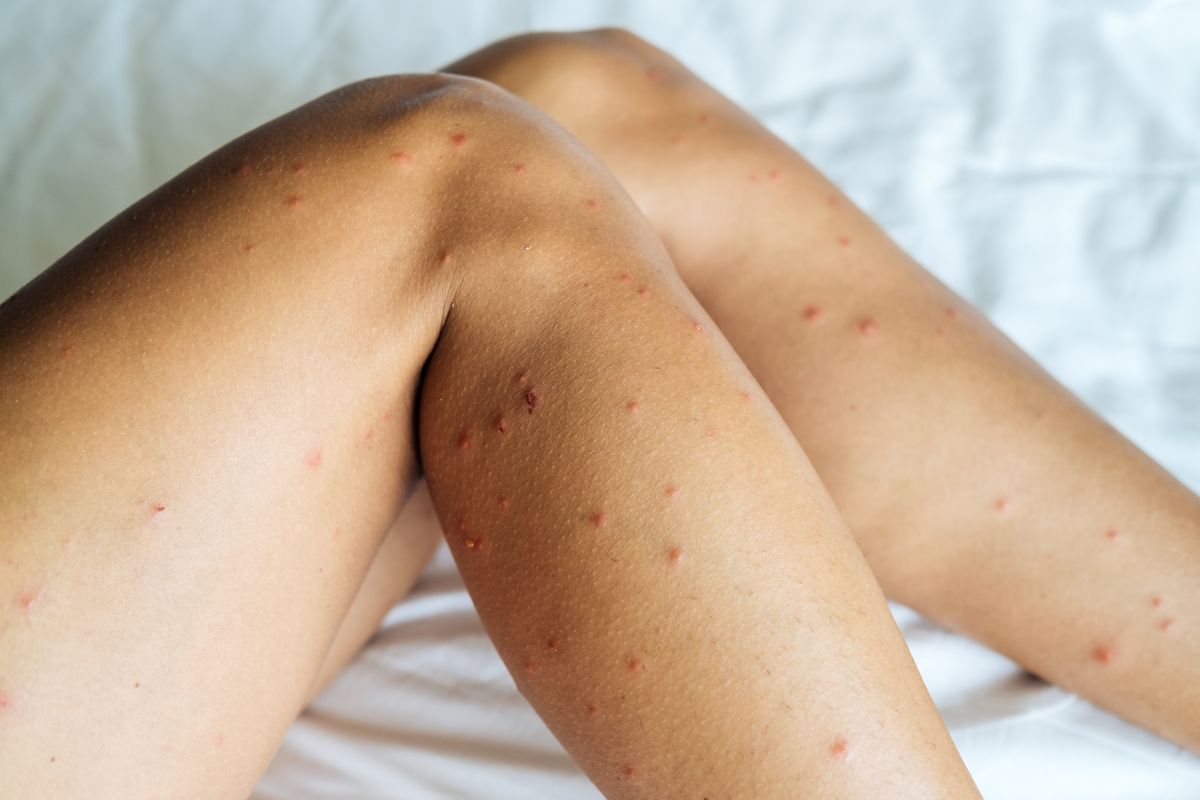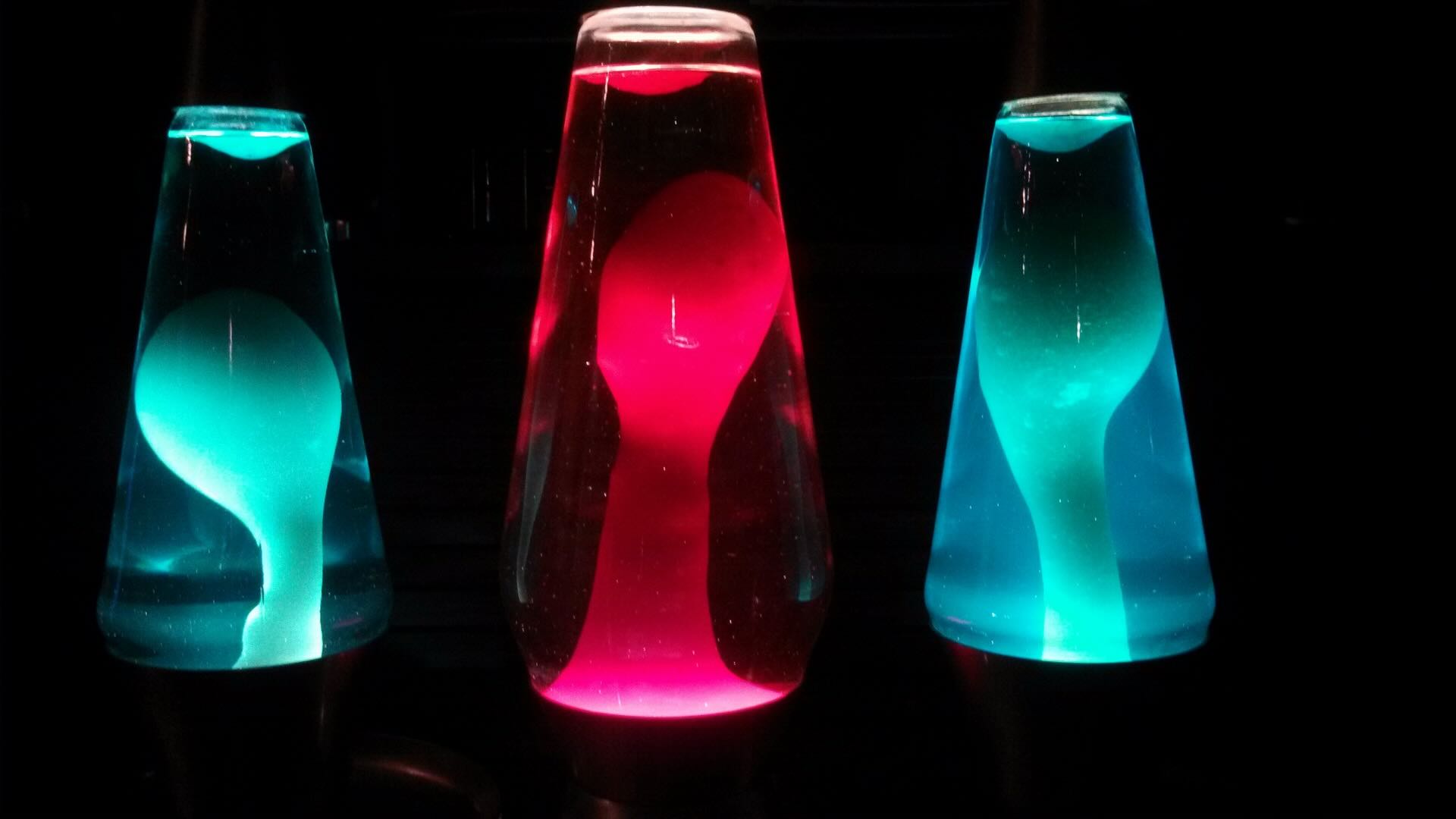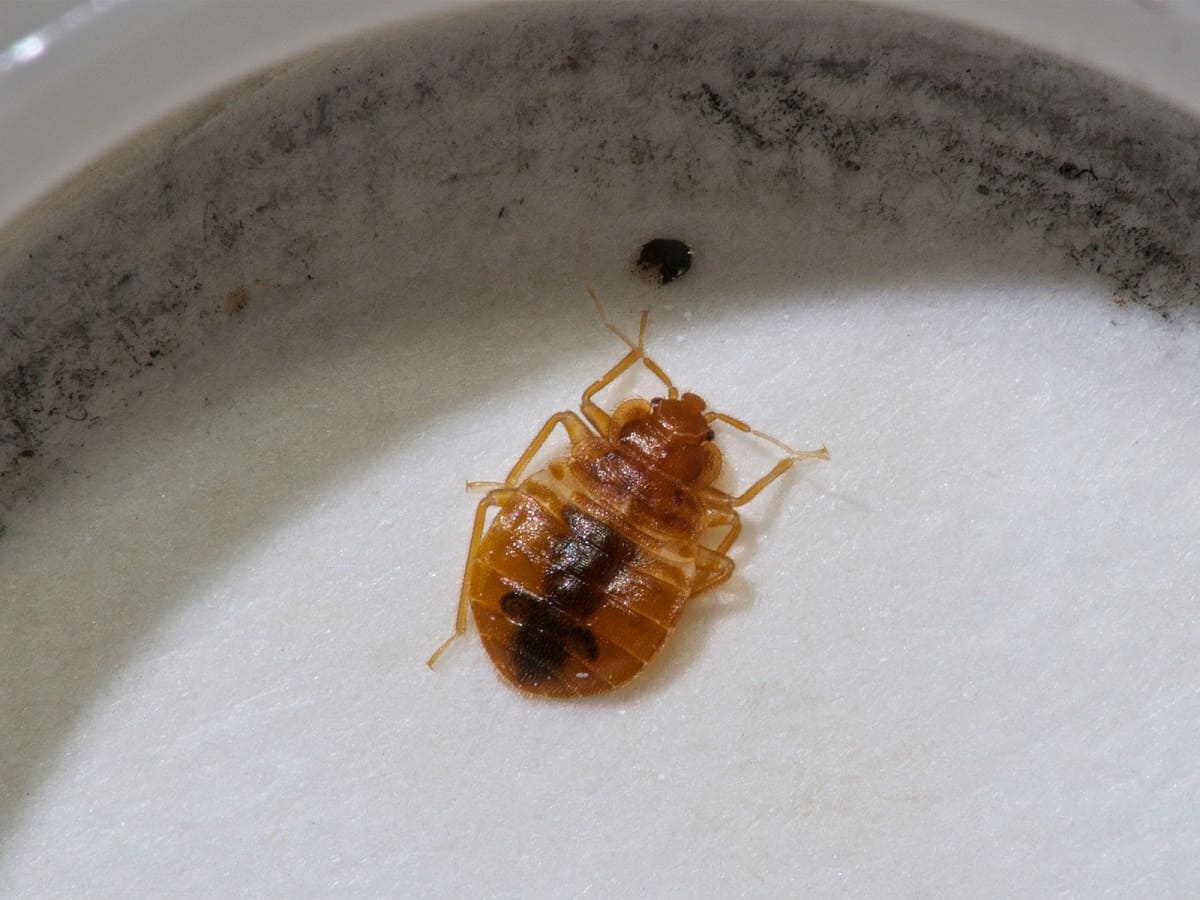Home>Furniture>Bedroom Furniture>How Long Does It Take For A Bed Bug Bite To Show Up
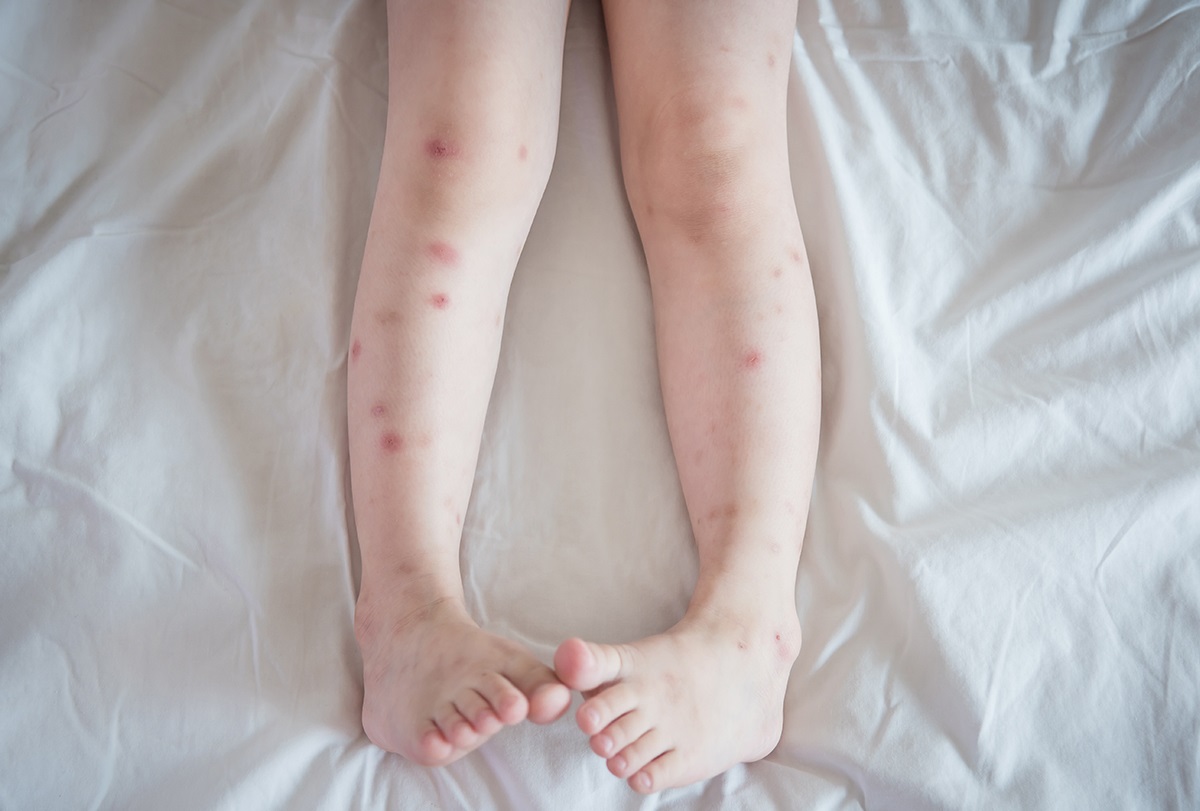

Bedroom Furniture
How Long Does It Take For A Bed Bug Bite To Show Up
Modified: January 9, 2024
Discover how long it takes for a bed bug bite to appear. Learn more about bedroom furniture and how to prevent bed bug infestations.
(Many of the links in this article redirect to a specific reviewed product. Your purchase of these products through affiliate links helps to generate commission for Storables.com, at no extra cost. Learn more)
Introduction
Bed bugs are small, parasitic insects that feed on the blood of humans and animals. While they are not known to transmit diseases, their presence can cause discomfort and annoyance. One of the telltale signs of a bed bug infestation is the appearance of itchy, red bites on your skin. However, many people wonder how long it takes for bed bug bites to show up after being bitten.
In this article, we will delve into the topic of bed bug bites and explore the factors that can affect the appearance of these bites. We will also discuss the average time frame for bed bug bite symptoms to manifest and provide helpful tips for treating and preventing bed bug bites.
Key Takeaways:
- Bed bug bites can appear immediately or take days to manifest, depending on factors like sensitivity, number and location of bites, and personal reaction time.
- Treating bed bug bites involves cleaning the area, applying topical creams, and avoiding scratching to prevent infection. Prevention measures include regular home inspections and being cautious while traveling.
Read more: What Helps Bed Bug Bites
Understanding Bed Bug Bites
Bed bug bites can vary in appearance depending on the person and their reaction to the bites. Some individuals may have no reaction at all, while others may develop itchy red welts. These bites are usually small and can be clustered together in a linear or zigzag pattern.
Unlike mosquito bites which are generally painless, bed bug bites can cause itching, redness, and swelling. The itching sensation is often intense and can lead to excessive scratching, which may cause secondary infections.
It’s important to note that not all individuals will experience an immediate reaction to bed bug bites. Some people may not even realize they have been bitten until hours or days later when the symptoms start to appear.
Bed bugs are nocturnal insects, which means they are most active at night when their human hosts are asleep. They are attracted to the warmth and carbon dioxide emitted by our bodies, making our beds and bedrooms the perfect environment for them to thrive.
When a bed bug bites, it pierces the skin and injects its saliva, which contains enzymes that help it feed on the blood without interruption. These enzymes can trigger an allergic reaction in some individuals, leading to the development of visible symptoms.
Now that we have a basic understanding of bed bug bites, let’s explore the factors that can influence how quickly these bites become apparent.
Factors Affecting the Appearance of Bed Bug Bites
Several factors can affect how quickly bed bug bites become visible on your skin. It’s important to understand these factors as they can help explain why some people may experience immediate reactions while others might have delayed symptoms.
1. Sensitivity to Bed Bug Bites: Everyone’s body reacts differently to insect bites, including bed bug bites. Some individuals may have a heightened sensitivity to the saliva that bed bugs inject, resulting in an immediate allergic reaction and the rapid appearance of bite symptoms. Others may have a lower sensitivity, leading to delayed reactions.
2. Number of Bites: The number of bites you receive can also impact how quickly you notice the symptoms. If you are bitten multiple times in one area, the bites may become more noticeable sooner compared to just a single bite.
3. Location of Bites: Bed bug bites can occur on any part of the body that is exposed while you sleep. However, some areas, such as the face, neck, arms, and legs, are more commonly targeted by bed bugs. Bites on these areas are typically easier to spot and may become visible sooner.
4. Personal Reaction Time: Each person’s body reacts at its own pace. Some individuals may have a faster immune response, causing the symptoms of bed bug bites to appear sooner. Others may have a slower reaction time, leading to delayed symptoms.
5. Previous Exposure and Sensitization: If you have been previously exposed to bed bugs and have developed sensitization to their bites, subsequent bites may lead to quicker symptom appearance. Your immune system may recognize the bed bug saliva enzymes and mount a faster allergic response.
It’s important to keep in mind that bed bug bites can sometimes be mistaken for other insect bites or skin conditions. If you suspect bed bugs as the culprit, it’s best to consult with a professional pest control expert for accurate identification and treatment.
Now that we understand the factors that affect the appearance of bed bug bites, let’s explore the average time frame for the manifestation of these bite symptoms.
Average Time Frame for Bed Bug Bite Symptoms
The time it takes for bed bug bite symptoms to appear can vary from person to person. In some cases, the symptoms may show up almost immediately after being bitten, while in others, they may take several days to manifest. Understanding the average time frame can help you identify and address a bed bug infestation.
Immediate Reactions: Some individuals may experience an immediate reaction to bed bug bites. This means that within minutes or hours of being bitten, they will notice redness, swelling, and itching at the site of the bite. Immediate reactions occur in about 30% of people who are bitten by bed bugs.
Delayed Reactions: Delayed reactions are more common and can take anywhere from a few days to two weeks to become apparent. During this time, an individual may not have any visible symptoms, making it difficult to connect the bites to bed bugs. However, after the initial delay, the bites may suddenly appear and cause discomfort.
This delayed reaction is due to the time it takes for the body to develop an immune response to the bed bug saliva. Once the immune system recognizes the foreign substances in the saliva, it produces histamines, which are responsible for the itching and inflammation associated with the bites.
It’s important to note that while bed bug bites can cause discomfort and irritation, they typically resolve on their own within a week or two. However, if you experience severe reactions or signs of infection, such as increased pain, swelling, or oozing, it’s important to seek medical attention.
Now that we understand the time frame for bed bug bite symptoms, let’s explore some of the immediate and delayed reactions that can occur.
Bed bug bites can take anywhere from a few minutes to 14 days to show up on your skin. Keep an eye out for red, itchy welts in clusters.
Immediate Reactions to Bed Bug Bites
Immediate reactions to bed bug bites refer to the symptoms that appear within a short period after being bitten. While not everyone experiences immediate reactions, they can occur in about 30% of individuals who are bitten by bed bugs.
1. Redness and Swelling: One of the most common immediate reactions to bed bug bites is redness and swelling at the site of the bite. The affected area may appear raised and inflamed, resembling a small, itchy bump. The redness and swelling are a result of the body’s inflammatory response to the bed bug’s saliva.
2. Itching: Bed bug bites can be incredibly itchy, leading to discomfort and an irresistible urge to scratch. Scratching can further irritate the skin and potentially break it, increasing the risk of infection. It’s important to avoid scratching the bites and seek relief through over-the-counter anti-itch creams or cold compresses.
3. Rash or Hives: In some cases, bed bug bites may trigger a rash or hives, especially in individuals who are highly sensitive or allergic to the bed bug saliva. The rash may appear as a cluster of small, red bumps or as a more widespread allergic reaction.
4. Blistering: In rare instances, bed bug bites can lead to blister formation. These fluid-filled sacs can be painful and may increase the risk of infection if they rupture. If you notice blisters developing at the site of a bed bug bite, it’s best to seek medical attention for proper evaluation and treatment.
Immediate reactions to bed bug bites are often a result of the body’s immediate immune response to the injected saliva. These symptoms can vary in severity and may subside on their own within a few days.
However, if you experience severe or persistent symptoms, such as an allergic reaction, difficulty breathing, or widespread rash, it is important to seek medical attention immediately, as these may indicate a more severe allergic response.
Now that we understand the immediate reactions, let’s explore the delayed reactions to bed bug bites.
Read more: How Long Does It Take Bed Bugs To Die
Delayed Reactions to Bed Bug Bites
Delayed reactions to bed bug bites are more common than immediate reactions and can occur in individuals who have been bitten by bed bugs. These reactions typically manifest a few days to two weeks after the initial bite.
1. Itchy Bumps or Welts: One of the most common delayed reactions to bed bug bites is the appearance of itchy bumps or welts on the skin. These raised, red areas can be clustered together or scattered across the body. The itching can be intense and may lead to further skin irritation if scratched.
2. Skin Discoloration: Some individuals may notice skin discoloration at the site of bed bug bites. This can include darkening or lightening of the skin, which may take weeks or even months to fade away completely.
3. Secondary Infections: Excessive scratching of bed bug bites can break the skin, increasing the risk of secondary infections. Bacterial infections can develop, causing symptoms such as increased pain, redness, swelling, and pus formation. If you notice signs of infection, it is essential to seek medical attention for proper treatment.
4. Delayed Allergic Reactions: In rare cases, delayed allergic reactions can occur following bed bug bites. These reactions may include the development of hives, rash, difficulty breathing, or swelling of the lips, tongue, or face. If you experience any of these symptoms, seek immediate medical attention, as they may indicate a severe allergic response.
It’s important to note that while delayed reactions to bed bug bites can be inconvenient and uncomfortable, they generally resolve on their own without medical intervention. However, if symptoms persist or worsen, or if you develop signs of infection, it’s best to consult a healthcare professional for appropriate evaluation and treatment.
Now that we have explored the immediate and delayed reactions to bed bug bites, let’s discuss how to treat these bites for relief.
Treating Bed Bug Bites
Bed bug bites can be itchy and uncomfortable, but there are steps you can take to alleviate the symptoms and promote healing. Here are some tips for treating bed bug bites:
1. Clean the Bites: Gently wash the affected area with mild soap and water to clean the bites and reduce the risk of infection. Avoid scrubbing the bites, as this may increase irritation.
2. Apply Calamine Lotion or Hydrocortisone Cream: Calamine lotion or hydrocortisone cream can help relieve itching and reduce inflammation. Apply a thin layer to the affected area as directed on the packaging.
3. Use Cold Compresses: Applying a cold compress or ice pack wrapped in a thin cloth to the bites can provide temporary relief from itching and help reduce swelling. Do not apply ice directly to the skin to avoid damage.
4. Avoid Scratching: It can be tempting to scratch bed bug bites due to the intense itching, but scratching can break the skin and increase the risk of infection. Try using over-the-counter anti-itch creams or lotions instead.
5. Take Oral Antihistamines: If the itching is severe and affecting your sleep or daily activities, consider taking an oral antihistamine. These medications can help relieve itching and reduce inflammation. It’s important to follow the instructions and consult a healthcare professional if you have any concerns or underlying medical conditions.
6. Keep the Area Clean and Dry: Keep the bed bug bite area clean and dry to promote healing. Avoid applying excessive creams or ointments that may trap moisture and prolong the healing process.
7. Seek Medical Attention, if Necessary: If you experience severe symptoms, such as an allergic reaction, intense swelling, or signs of infection, seek medical attention promptly. A healthcare professional can evaluate your condition and provide appropriate treatment.
Remember, treating bed bug bites is primarily focused on symptom relief. Eliminating the source of the bites, which is the bed bug infestation, is crucial to prevent further bites and ensure long-term relief.
Now that we have discussed how to treat bed bug bites, let’s explore some tips for preventing these bites in the first place.
Prevention and Conclusion
Preventing bed bug bites starts with preventing a bed bug infestation in your home. Here are some tips to help you avoid these pesky insects:
1. Regularly Inspect Your Home: Check your mattress, bedding, furniture, and other areas for signs of bed bugs regularly. Look for live bugs, shed skins, or dark spots that indicate their presence.
2. Encase Your Mattress: Use mattress and pillow encasements designed to keep bed bugs out. These encasements create a barrier that prevents bed bugs from getting into or out of your mattress.
3. Keep a Clean and Clutter-Free Home: Bed bugs thrive in cluttered environments, so keep your home tidy and organized. Vacuum regularly, especially in cracks and crevices where bed bugs can hide.
4. Be Cautious While Traveling: Inspect hotel rooms and accommodations for signs of bed bugs before unpacking. Keep your luggage off the floor and use luggage racks or plastic bags to prevent bed bugs from hitchhiking a ride back home with you.
5. Be Mindful of Secondhand Furniture: If you buy used furniture, thoroughly inspect it for any signs of bed bug activity before bringing it into your home. Avoid picking up discarded furniture from the curb to minimize the risk of bed bug infestation.
6. Consult a Professional: If you suspect a bed bug infestation or have been dealing with persistent bites, consult a professional pest control expert. They have the knowledge and expertise to identify and treat the infestation effectively.
In conclusion, bed bug bites can vary in their appearance and timing of symptoms. Immediate reactions to bed bug bites can occur within minutes or hours, while delayed reactions can take days or weeks to manifest. Treating bed bug bites involves cleaning the area, applying topical creams or lotions, and avoiding scratching to prevent infection.
Preventing bed bug bites starts with prevention measures, such as regular home inspections, keeping a clean environment, and being cautious while traveling. By implementing these prevention strategies, you can minimize the risk of bed bug infestations and protect yourself from their bites.
Remember, if you suspect a bed bug infestation in your home, it’s important to seek professional help for effective eradication. Don’t let these tiny pests disrupt your comfort and peace of mind. Stay vigilant, take preventive measures, and seek assistance when needed to keep annoying bed bug bites at bay.
Frequently Asked Questions about How Long Does It Take For A Bed Bug Bite To Show Up
Was this page helpful?
At Storables.com, we guarantee accurate and reliable information. Our content, validated by Expert Board Contributors, is crafted following stringent Editorial Policies. We're committed to providing you with well-researched, expert-backed insights for all your informational needs.
